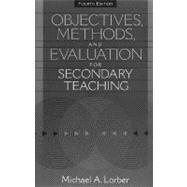
| Checking The Foundationa Quick Review | |
| Educational Philosophies and Why You Need One | |
| Rationale | |
| Sample Objectives | |
| What is a Philosophy of Education | |
| Words of Advice | |
| Learning from the Ancient Greeks | |
| The Elder Sophists The First Professional teachers Socrates Knowledge is Inborn | |
| Questioning Can Draw it Out Plato | |
| The Ideal World of Ideas | |
| Learn by Thinking Aristotle | |
| World Ruled by Natural Laws | |
| Learn by Experience | |
| Traditional Philosophies | |
| Perennialism and Essentialism | |
| Perennialism Essentialism | |
| Nontraditional Philosophies | |
| Progressivism and Existentialism | |
| Progressivism Existentialism | |
| Summary | |
| So How Does This Affect My Teaching? | |
| Key Terms, People, and Ideas | |
| Why the Schools Are As They Are | |
| Rationale | |
| Sample Objectives | |
| The Effectiveness of Our Schools | |
| From Pilgrims to Progressives | |
| How and Why Secondary Schools Were Established The State's Interest in Education | |
| Educating All the Children at Public Expense College Preparation v. General Education Land Ordinance of 1785-First Federal Action Concerning Education | |
| The Morrill Land Grant Act of 1862-Vocational Education Emerges Committee of Ten Report, 1893-Essentialism and Instructional Time | |
| Time Under Instruction and the Carnegie Unit The Smith-Hughes Act Commission on the Reorganization of Secondary | |
| Education Seven Cardinal Principles Edward L. Thorndike | |
| Discrediting the ``Faculty'' Theory The Eight Year Study1933-1941 | |
| Post World War II to the Present | |
| The Supreme Court Separate is not Equal Sputnick and the National Defense Education Act The Great Society and Compensatory Education A Nation at Risk America 2000 | |
| Summary | |
| So How Does This Affect My Teaching? | |
| Key Terms, People, and Ideas | |
| Learning Theories and Instructional Models | |
| Rationale | |
| Sample Objectives | |
| Learning Theories | |
| Behaviorism | |
| Gestalt Theory | |
| Cognitive Field | |
| Cognitive Theory | |
| Comparison of Learning Theories | |
| Instructional Models | |
| The Military Model The Systems Approach General Model of Instruction (GMI) Goal-Referenced Instructional Model Logical Instructional Model (LIM) Assure | |
| Preassessment | |
| The Teacher's Role as a Faculty Member Things to Think About Concerning Instructional Models | |
| Summary | |
| So How Does This Affect My Teaching? | |
| Key Terms, People, and Ideas | |
| Planningdeciding Direction | |
| Selecting Instructional Content | |
| Rationale | |
| Sample Objectives | |
| Broad Goals | |
| Seven Cardinal Principles, Five Broad Goals | |
| Tyler's Rationale | |
| Subject-Area Specialists | |
| National Groups and Councils, Other Faculty, Textbooks, Concepts | |
| The Learners Themselves | |
| Teacher Expectations | |
| The Pygmalion Galatea Effects | |
| Studies of Contemporary Life Outside of School | |
| Writing a Rationale: Needs of the Subject-Area, Students, Society | |
| Summary | |
| So How Does This Affect My Teaching? | |
| Key Terms, People, and Ideas | |
| The Structure of Precise Instructional Objectives | |
| Rationale | |
| Sample Objectives | |
| Why Precise Goals Are Useful | |
| Purposes and Parts of Precise Instructional Objectives | |
| Ralph TylerRobert Mager Observable, Terminal Behaviors, Conditions, Minimum Acceptable Standards | |
| Summary | |
| So How Does This Affect My Teaching? | |
| P | |
| Table of Contents provided by Publisher. All Rights Reserved. |
The New copy of this book will include any supplemental materials advertised. Please check the title of the book to determine if it should include any access cards, study guides, lab manuals, CDs, etc.
The Used, Rental and eBook copies of this book are not guaranteed to include any supplemental materials. Typically, only the book itself is included. This is true even if the title states it includes any access cards, study guides, lab manuals, CDs, etc.